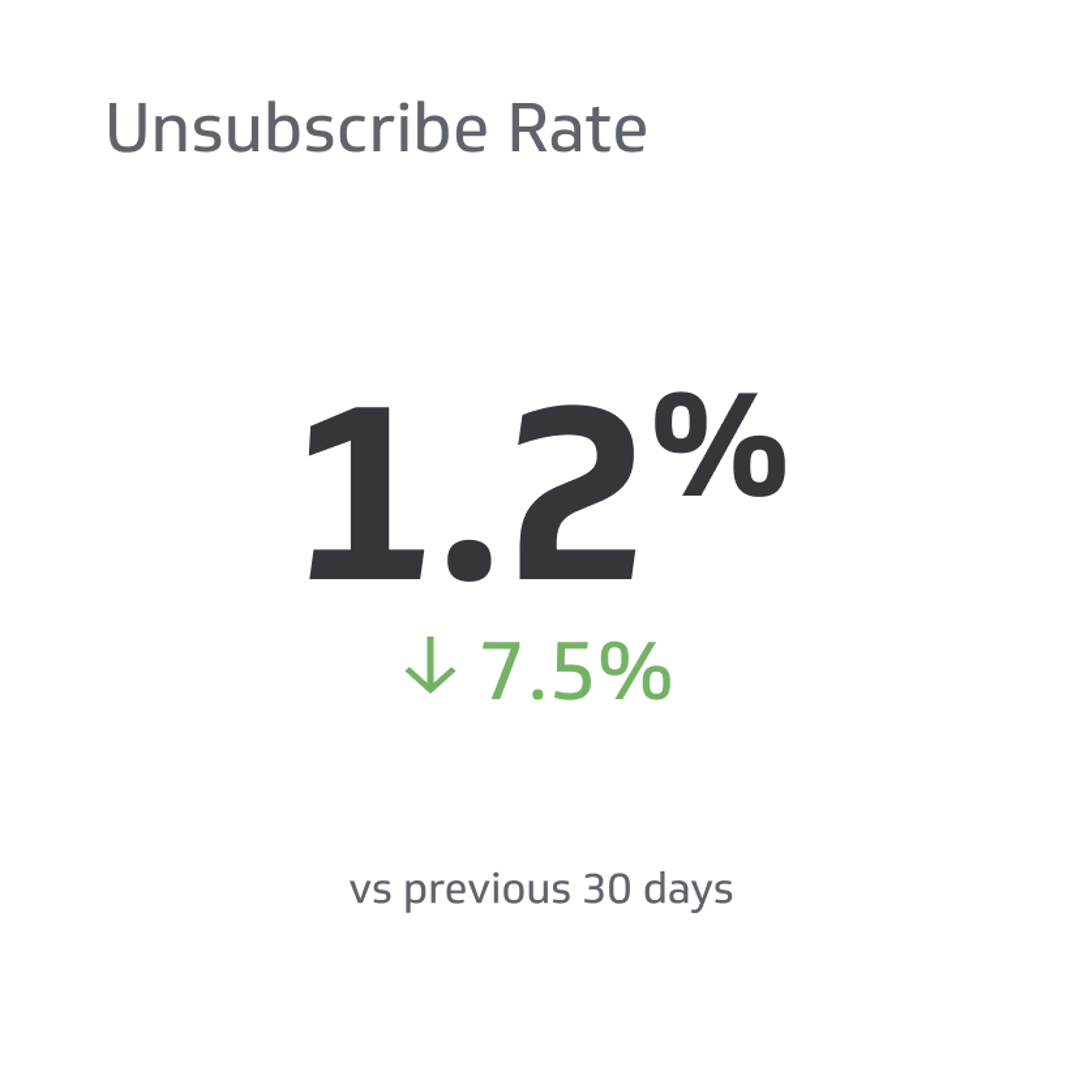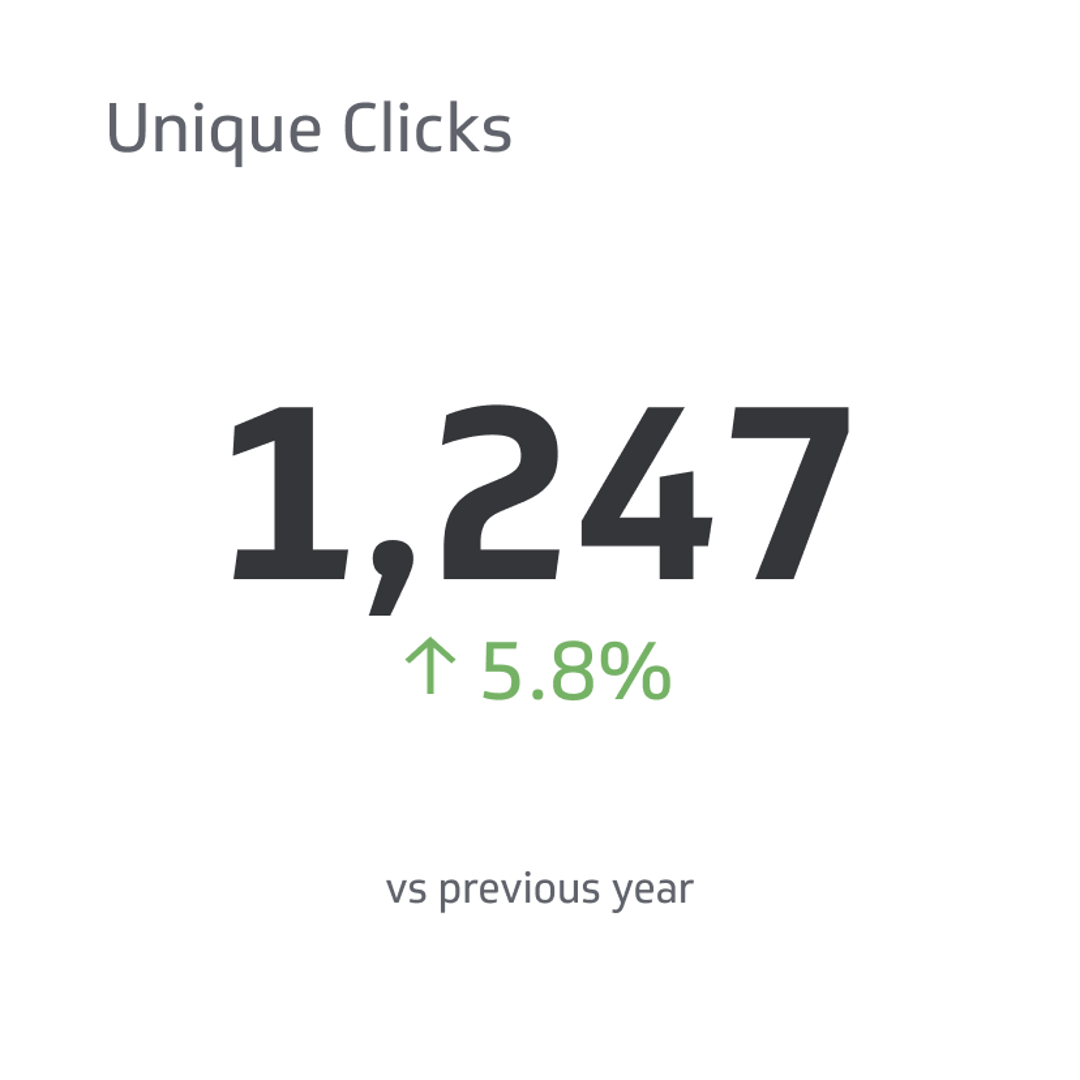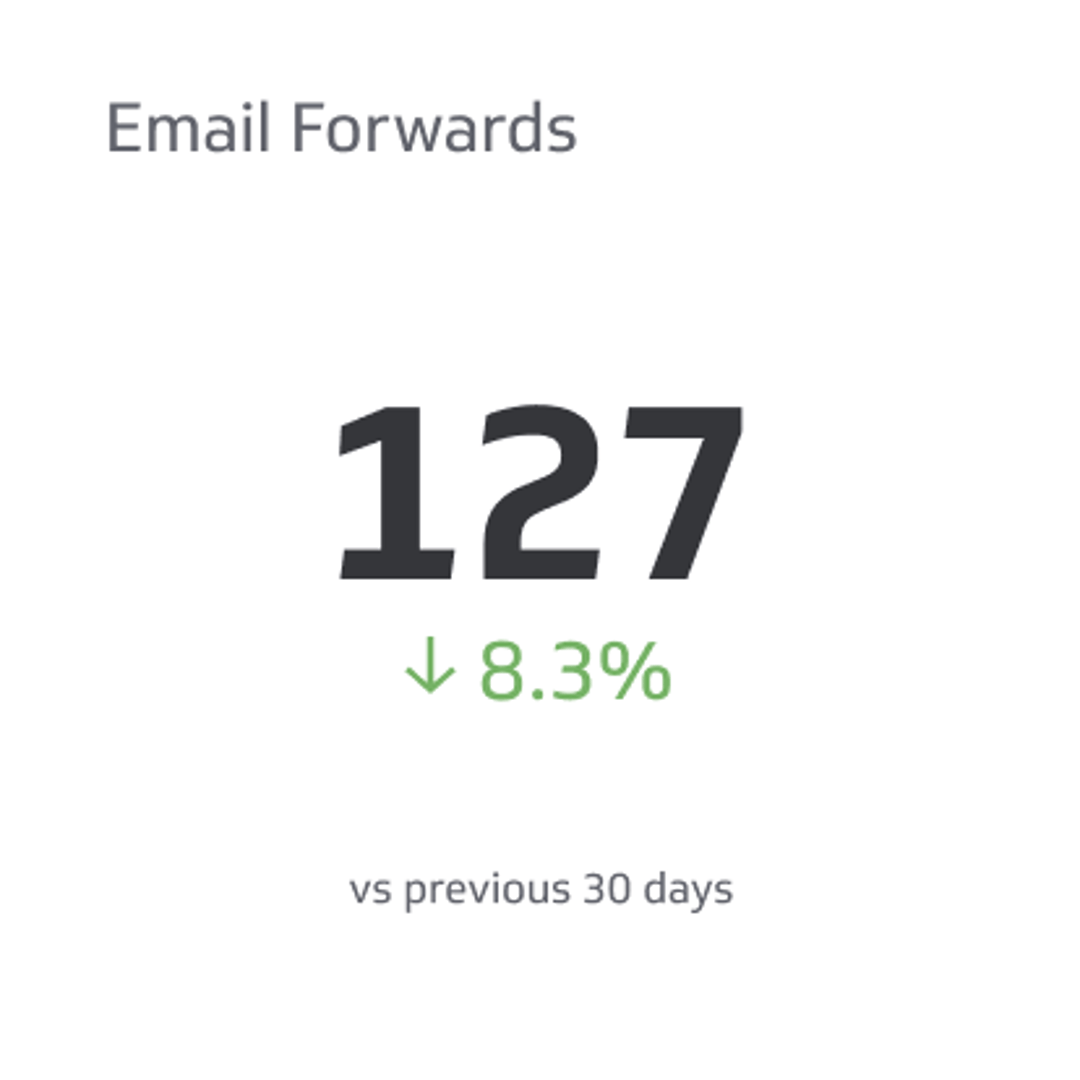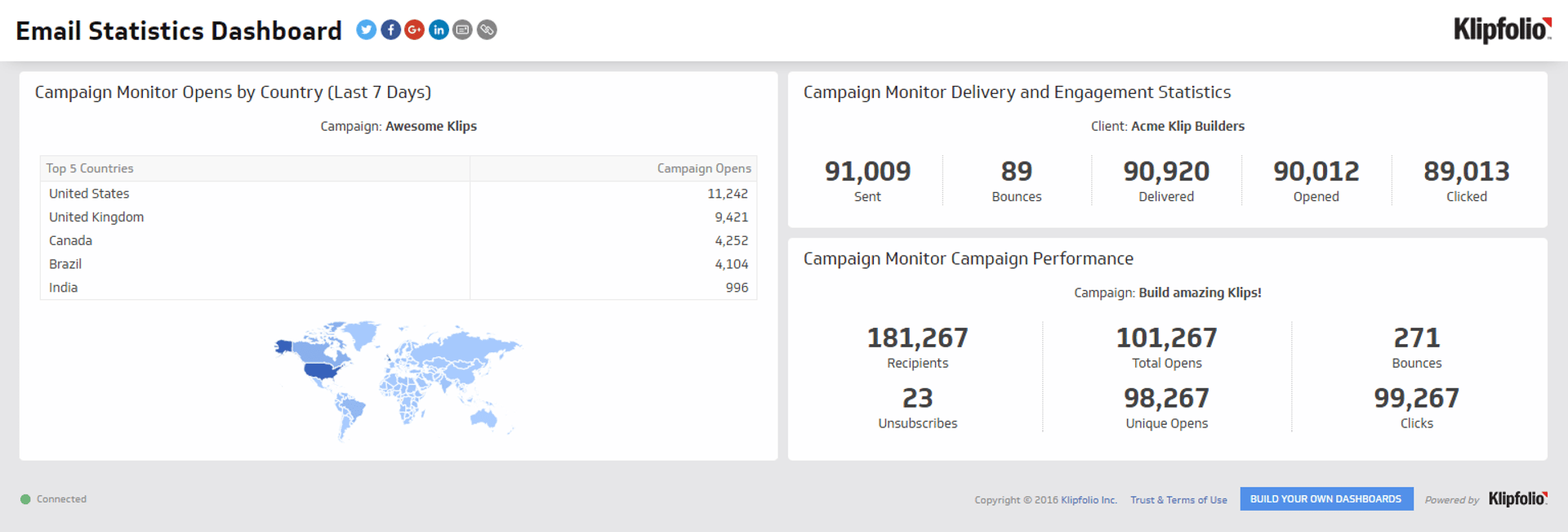Unsubscribe Rate
The unsubscribe rate is one of the most important metrics to track if you're sending out emails because it can keep your emails relevant and not upset too many consumers.
Track all your Email Marketing KPIs in one place
Sign up for free and start making decisions for your business with confidence.

There are a lot of things that go into marketing, mainly email marketing. Several different metrics can help you, as a brand or company, better understand how well your email marketing is going or where you can make improvements. The unsubscribe rate is one of the most common marketing metrics people use.
While it's easy to overlook this metric, you don't want to do that. When you don't pay attention to this metric, your spam complaint can skyrocket, and your business can be negatively affected by it.
So what exactly is the unsubscribe rate in email marketing? To save you time scouring the internet, we'll get into the unsubscribe rate, the formula, how to calculate it, and how to reduce it and better your business.
What Is an Unsubscribe Rate?
Most companies are known for sending out email campaigns when you sign up with them or even using your email address as a way to get a digital receipt.
While you'll have a lot of subscribers at one point, the unsubscribe rate is the percentage of email subscribers who have chosen to opt out of getting any more of your brand or company's emails.
The unsubscribe rate is one of the most important email marketing metrics to track if you're sending out emails because it can keep your emails relevant and not upset too many consumers.
What's a Good Unsubscribe Rate?
Everyone has their own opinions on what a good or bad unsubscribe rate is. Generally, the industry average for a "good" subscription rate is at or below 0.5%. That's what people consider normal or good, and anything less than that is excellent.
When calculating your brand or company's unsubscribe rate, it's essential to notice that newer email lists will typically have higher rates because people are taking their time to decide if they want to keep receiving these emails. The more you build your relationship with customers, the lower you'll see your unsubscribe rate.
Overall, a good unsubscribe rate will vary on several factors. What might be a good unsubscribe rate for a small business might not be for a Fortune 500 company. It also depends on the email list size, where you conduct business and other similar factors.
The formula for Unsubscribe Rate
The formula to calculate the unsubscribe rate is pretty simple. Once you have it, you can plug in the corresponding values to calculate your unsubscribe rate. The formula for this metric is:
- Unsubscribe rate = Number of unsubscribed users/number of emails sent x 100
Or:
- Number of unsubscribed users/number of emails sent x 100 = Unsubscribe rate
Calculating Unsubscribe Rate
Now that you know the formula for calculating the unsubscribe rate, let's look at a few examples so you can see just how simple it is to calculate it.
For the first example, let's say you want to calculate your unsubscribe rate after sending out a Fourth of July marketing campaign. You sent out 10,000 emails, and 200 people unsubscribed from received emails in the future. When you plug the values into the formula, it looks like this:
- 200 / 10,000 x 100 = 2%
This would mean that this company might want to rethink its email marketing campaigns because it's above what most people consider to be a "good" unsubscribe rate.
Here's another example of a Memorial Day email marketing campaign. If a company sends out 15,000 emails and only 50 people unsubscribe, let's plug in the values and see what their unsubscribe rate would be:
- 50 / 15,000 x 100 = .33%
While this isn't as good as it could be, it's far better than the unsubscribe rate of our first example. However you look at it, this means that for the first company, 2% of their audience isn't interested in getting emails from them, while less than 1% of the audience at the second company isn't interested.
Tips to Reduce Unsubscribe Rate
No matter what your unsubscribe rate is, knowing how to reduce it when necessary is critical to being successful with your email marketing campaigns. At the end of the day, the fewer people you have unsubscribed from our emails, the better.
The good news is that reducing your unsubscribe rate isn't as challenging as it might sound. We've compiled a handful of tips to help your brand and company keep your email unsubscribe rate low.
Personalize Your Emails
You've heard about personalization throughout marketing, not just email marketing. It's because it's vital to the success of a brand and company in our day and age. Finding ways to personalize your email campaigns so that consumers feel more comfortable with you will encourage them to stay subscribed to your emails,
Segmenting users and targeting specific ones with personalized emails is vital to any email marketing strategy. People are more inclined to interact with emails, click on promotions, and visit your website the more they resonate with your emails and trust your brand.
Personalization should be something you use throughout marketing, but if you haven't tried it with email marketing, then you're missing out. Even if you only resonate with one of these tips to reduce the unsubscribe rate, let it be this one.
Gather Feedback From your Subscribers
Gathering feedback from your subscribers is beneficial for more than just knowing how to reduce your unsubscribe rate, but for this article, we're focusing on it and how it pertains to email marketing.
You can use surveys to gather feedback from your subscribers on why they follow you or what has made them consider unsubscribing in the past. You can create these on survey platforms, post polls on your social media accounts, or however, you want to do it.
There are several options, and using more than one can be the best way to get as much information as possible from as many subscribers as possible. You'll want to ask probing questions that will matter to you and the goals behind sending out this survey (understanding why people unsubscribe from your emails).
You can ask questions that gauge how close people have been to unsubscribing, ask people their ages to see if there are specific age groups you need to target to reduce your unsubscribe rate, and more. The possibilities are almost endless, so you'll want to take some time to develop thorough questions before sending out your survey.
Clean Your Email List Regularly
Building an email list is part of the battle of having a successful email list as a business and brand owner. You must go through your email list occasionally to clean it out. You're probably wondering why you should do this because the whole point is to lower your unsubscribe rate.
Removing users who've opted out will help you have a lower unsubscribe rate because you're no longer factoring those email addresses into your calculations. You'll ensure you're only sending emails to those who want to see your email marketing campaigns.
Not only will this reduce your unsubscribe rate, but you won't be wasting your time reaching out to people who don't want to read your emails, probably don't open them in the first place, or those who get irritated seeing your brand's name because they thought they opted out of emails from you.
Overall, cleaning out your email list every so often will help you maintain your high domain reputation.
Don't Use a Purchased Email List
You can purchase email lists to make it appear like you have more email subscribers than you do, but when you do this, you're not gathering customers organically. Sure, these emails will reach real people, but many didn't choose to receive emails from you, which can hurt your reputation as a brand and company.
Never purchasing an email list is a great way to keep your unsubscribe rate low. If you have, remove those you don't think want to follow you and honor those who opt out of your email marketing campaigns.
Purchasing an email list increases the chances that people are going to unsubscribe from your emails, increasing your unsubscribe rate. Do your best to grow your email list organically by building relationships rather than taking the easy way out and purchasing it from another company.
Emailing people from a pre-purchased email list will hurt other metrics of your brand, and people will likely find you far more annoying. Purchasing an email list and using it can harm your brand and be harder to recover from.
Optimize Email Frequency
One of the most significant issues with email marketing is consumers feel like they get too many emails too often. By optimizing the email frequency, you can reduce your unsubscribe rate and become a far less annoying brand.
Even people who love a specific brand are more likely to unsubscribe at some point if they feel like they're getting too many irrelevant emails too often. The best way to avoid this is to honor what your audience wants.
When sending out a survey to learn more about your subscribers' preferences, you can ask about timeliness and how many emails they think is an okay amount to send, and the frequency of the emails you should send to them.
For example, if they signed up for a weekly newsletter and nothing else, you don't want to send them more than one email weekly. If they sign up for daily emails for promotions, you only want to send them emails daily that pertain to specific promotions and discounts.
Send them only that email if they signed up for your weekly newsletter. If they sign up for a promotional email daily, ensure you send them only those emails. You'll be able to better tailor your emails to customers who only want a few and to others who will regularly check their inboxes for your emails.
Understand Why People Unsubscribe
Asking your subscribers why they would unsubscribe is one step, but understanding the general trends of people who unsubscribe can help you reduce your unsubscribe rate. Pathwire conducted a survey on email subscribers and found that over 50% of people are more likely to unsubscribe if they get an email from an address they don't recognize.
Others eventually choose to unsubscribe from brands they love because they feel they're not getting enough relevant content. When their inbox is crowded, they'll unsubscribe because they aren't interested in the emails they're being bombarded with.
A few other reasons why people tend to unsubscribe from brands, whether they love or hate them, include:
- Sending too many emails
- Opting in to get a specific offer
- Unsolicited promotional emails
Final Thoughts
Email marketing can be your best friend or your biggest enemy as a business owner. Understanding how email marketing works and your unsubscribe rate can make an enormous difference in your success.
The unsubscribe rate is how many people unsubscribe for every email you send. You can reduce your unsubscribe rate by better understanding your subscribers, not overwhelming people with emails, and personalizing them to specific audiences. Following these tips will ensure you get your message to the most people possible!
Related Metrics & KPIs



